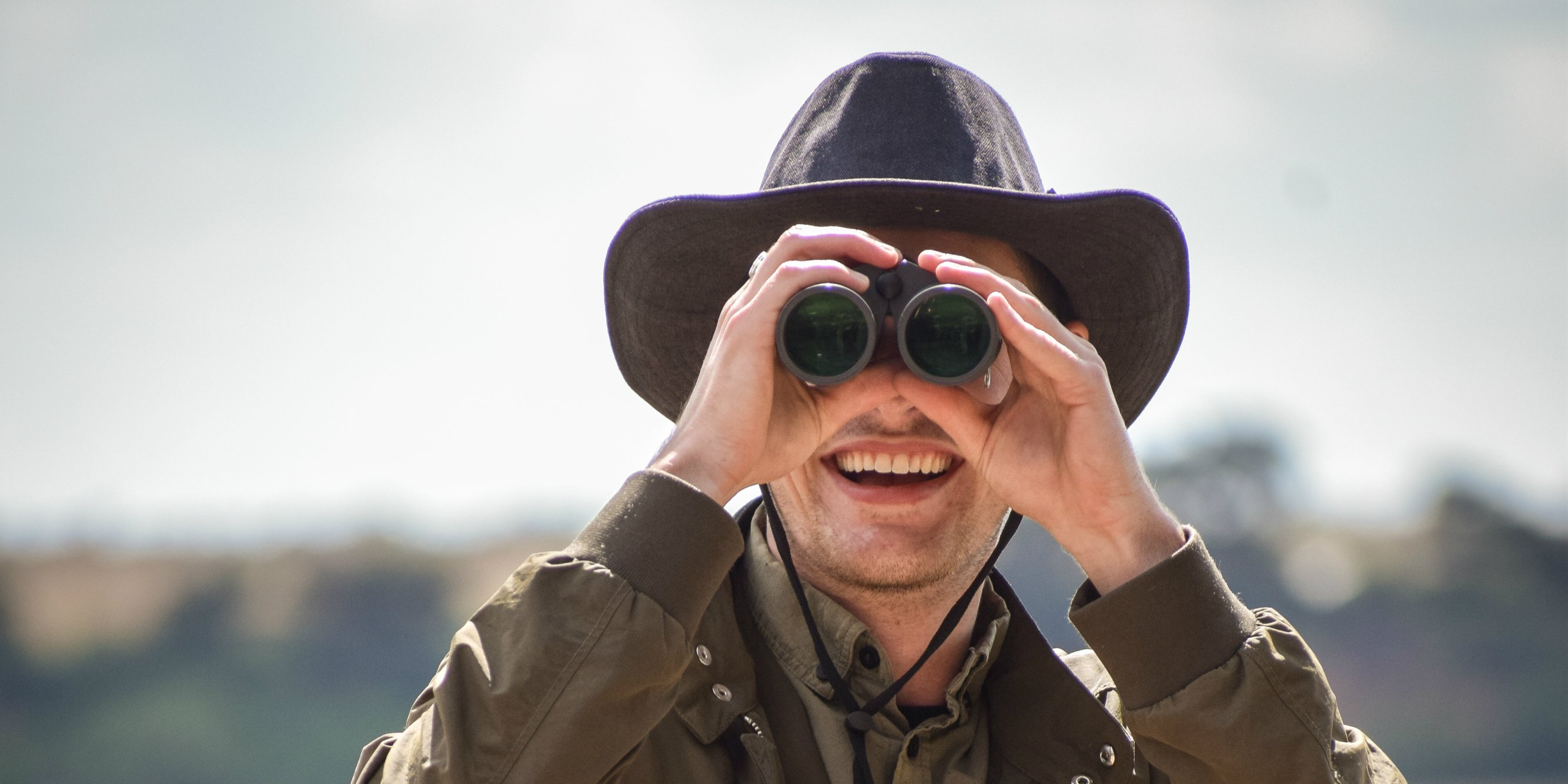Discover how Namib Desert wildlife thrives in extreme conditions – elephants, beetles, plants & more adapt uniquely to survive harsh environments.
GVI
Posted: July 9, 2024

Mark Easterbrook
Posted: September 16, 2019
Volunteering with wildlife presents many opportunities to learn new skills, participate in scientific research, and make an impact along the way. Living on a GVI program base is an exciting opportunity to connect with wildlife.
There is no need for prior experience. All that is required is an interest in animals, and in the environment. GVI operates with a strict hands-off animal handling policy. This policy ensures the natural behaviour of the animal is not negatively impacted by our actions.
From a base set within a natural ecosystem, you will be supporting researchers, and other people with a shared passion, to obtain data on key species.
From camera trapping to using telemetry equipment, from species identification to behavioural analysis, your observations will go a long way to support your favourite animal.
Here are five skills that you will learn when you volunteer with wildlife.

Identification studies produce a bank of images and observations of animals. This information is used to monitor the health of the animals being studied.
Identification skills are the basic requirements for a conservation career. Being able to identify an animal allows you to discuss it in more detail and communicate its behaviours and challenges.
As part of an identification study, you’ll capture images of your favourite animal at different times of the day. You’ll develop a camera trapping methodology that locates your camera at the best angles and locations to get an image useful for identification and behaviour study.
When you go on a wildlife volunteering program, you’ll support the researchers in the analysis of images. You’ll identify challenges facing the animal, and determine what action can be taken to mitigate the consequences. Maybe your image will be used to generate further support for the research and conservation of your favourite animal.
For example, this hyena conservation program in South Africa presents an opportunity to learn this skill.

Tracking an animal in a wooded grassland is challenging at the best of times. Telemetry is a communication system where data is transmitted from a field instrument to a receiving device. The field instrument tends to be a collar on the animal, and the receiving device an aerial.
Telemetry is sometimes used to reduce the time taken to locate shy creatures. You’ll correlate the beeps and squeaks of a radio transmitter and guide your group to the subject of the study.
The GVI programs in Karongwe Private Game Reserve present an opportunity to track and record animal movements. You’ll be able to watch a cheetah mother navigate her way through challenging terrain, in the competition for survival.
It is comforting to know that your observations will be interpreted and used by reserve management to support the survival of a shy species in a harsh ecosystem.

The cheetah is on the lowest rung on the predator ladder. Because they’re slight and shy, their kills are often snatched by lions and hyenas.
Introducing this species into an area governed by larger predators is challenging. Monitoring the hunting and eating success of the cheetah is important to determine the success rates of introducing it to similar environments elsewhere.
When we don’t eat for a day and weigh ourselves, we are lighter, but still maintain our shape. When the cheetah feeds, the abdomen visibly swells.
As she works off the previous meal over the following days, her abdomen size reduces. Monitoring her “fill rating”, provides researchers with valuable information about her ability to hunt and compete with other predators, and about the prey density in the reserve.

When you volunteer with wildlife, you have the opportunity to support GVI South Africa researchers with activities to effectively manage the ecological balance, during daily drives.
Determine which species are thriving, and which are struggling. Learn from the staff about their efforts to develop the literature and data they collect for use in reserve management or government policy.

For the big carnivores to prosper, a healthy population of herbivores is required, and in turn a healthy plant ecosystem is required. As part of GVI’s cheetah conservation program in the Karongwe Private Game Reserve, you will be involved with the monitoring of herbivore populations.
From the back of a game drive vehicle, you’ll observe the species of herbivores grazing before you. Count their numbers, identify their sex and note the impact they are having on the vegetation.
Your observations will create an improved understanding of the impact that predators and prey are having on the local environment. This information will be used by management and landowners to ensure a balance of natural resources.
In between drives, you’ll have an opportunity to be involved in the interpretation of the sightings.

Healthy wildlife requires healthy ecosystems. A surrounding community that understands the importance of the neighbouring ecosystem is integral to its conservation.
The environmental volunteering program in Cambodia focuses on community development, with volunteers taking part in and leading training workshops.
Through engagement with the community in the capacity of a teacher, you have an opportunity to influence people’s behaviour towards waste. The ecosystem will thank you for your part in reducing the load of plastic waste being put into the system.
So, join a wildlife volunteer program today, make an impact and gain conservation skills along the way.
Mark Easterbrook is an intern at the GVI Writing Academy. The Writing Academy is a skills-development program that pairs development editors with budding travel writers. Learn more about the program here.
Discover how Namib Desert wildlife thrives in extreme conditions – elephants, beetles, plants & more adapt uniquely to survive harsh environments.
GVI
Posted: July 9, 2024